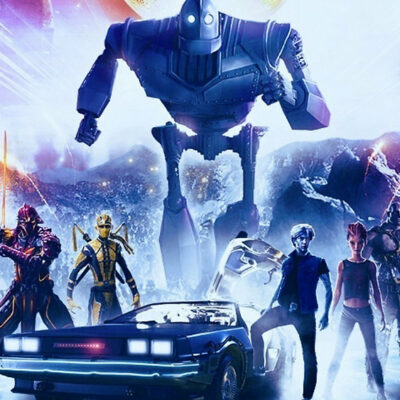Who is the most compassionate character in the Star Wars saga? Which Star Wars character is the most deserving of becoming the icon of animal welfare organisations? Are you thinking of some Jedi, perhaps? Or Rey? Padmé? No, no and no.
Weeping For The Rancor…
Meet Malakili. You may remember him from a brief appearance in Return of the Jedi. You know how the scene goes: Luke Skywalker arrives to negotiate with the vile Jabba the Hutt but is instead thrown into a pit with vicious rancor. Weaponless against the beast, our hero seems to be lost – but just when he is about to get devoured, he smashes a gate control panel that brings the heavy door on the rancor’s head, crushing it.
At this point, our attention is mostly split between the gruesomeness of the scene and the relief that Luke survived. But we still cannot avoid noticing the bare-chested man who rushes to the rancor’s side, pushing aside both Luke and Jabba’s guards that are busy trying to apprehend the Jedi, as if they did not matter. The man briefly stops to stare at the dead rancor and then breaks down in tears.
Malakili being comforted by his fellow, Giran, after the death of Pateesa.
The Hagrid of Star Wars
This is Malakili. Jabba’s beastmaster and the only person who would care about such a monster as the rancor, whom he named Pateesa, meaning “friend” in Huttese. Nondiscriminate compassion towards all animals and beasts was something envisioned in George Lucas’s original idea for Malakili. Lucas wanted to use the relationship of rancor and its keeper to show that “everyone loves someone. And even the worst, most horrible monster you can imagine was loved by his keeper. And the rancor probably loved his keeper.”
You may recognise the actor who portrayed Malakili. He is Paul Brooke, who appeared in numerous British TV series in minor roles (even though he was uncredited in Return of the Jedi).
Regarding Malakili himself, more details were added to his personality and history in subsequent Star Wars novels and other media. He was born on Corellia, the same planet as Han Solo, but he spent some portion of his life working in a circus on Nar Shaddaa. After some beasts escaped under his watch, Malakili was sold to slavery and eventually ended up in Jabba’s palace. He did not approve of Jabba’s treatment of his beasts, whom the Hutt mostly used to dispose of prisoners in an “amusing” manner. Malakili did his best to keep the animals fed and happy and was planning to one day escape together with Pateesa.
…Weeping For the Sarlacc
Malakili’s personality and history were elaborated on most detailedly in the 2016 novel Aftermath: Life Debt. One “interlude” chapter from Malakili’s point of view followed him after the events of Return of the Jedi. Jabba’s palace was empty, Pateesa was dead. Having lost his only friend, Malakili contemplated suicide. He wandered towards the Sarlacc pit, perhaps considering that he would accomplish something in his death by feeding the beast. To his dismay, he found that the explosion of Jabba’s barge had partly exposed the Sarlacc, and the big monster was now being bothered by Jawas who swarmed around the exposed tubes and pulled salvage out of them.
For the second time in a short while, Malakili wept for a “noble beast” being beat and mistreated. But the Jawas were too numerous and Malakili could do nothing to help the Sarlacc, neither could he go ahead with his contemplated suicide. He wandered on restlessly until he stumbled upon someone who gave his life a new purpose – Cobb Vanth, the sheriff of Mos Pelgo.
Cobb Vanth in the second season of The Mandalorian.
The Friend of Cobb Vanth
You would remember Cobb Vanth from the second season of The Mandalorian. This very same Cobb Vanth saved Malakili from a group of criminals, the Red Key Raiders, who ambushed him in the desert during his purposeless wandering. Cobb then offered Malakili a job: his fledgeling community needed someone to take care of rontos, the massive, long-necked creatures often used as mounts on Tatooine. Suddenly seeing that there was still some good he could do, a purpose to have, Malakili accepted.
Vanth also came up with another part-time job for Malakili. He had found a hutlet – a baby Hutt – whom the Red Key Raiders had wanted to install as a puppet ruler after Jabba’s demise. Whereas Cobb acknowledged that it was not exactly an animal and in Malakili’s field of expertise, Cobb still figured that he would be the most capable of taking care of it. Malakili agreed, and so his life work of caring for those the society would otherwise label as undesirable or ugly monsters continued.
A Story Of Empathy
Malakili is a unique character that puts the scene of Finn and Rose freeing the fathiers in Canto Bight to shame. His appearance was praised already in some of Return of the Jedi‘s reviews as bringing a very humane element into the story. The elaboration his character received in Chuck Wendig’s Aftermath trilogy (he appeared briefly both in the second and third book) continued along these lines.
Two small details perhaps deserve mentioning. One is that in one 1995 Young Jedi Knights story, even Luke Skywalker reminisced about killing the rancor many years afterwards and felt it was a shame that he did.
Second concerns the person in the film who offers Malakili to put his arms around to comfort after Pateesa’s death. That is Giran, a Nikto who also worked in Jabba’s palace, and his character is disputable. While in the old Star Wars Insider from 2002, he was portrayed as only admiring the rancor’s strength, the 2016 Character Encyclopedia described him as sharing Malakili’s sentiment and genuinely wishing to comfort his friend after the terrible loss that befell him.




